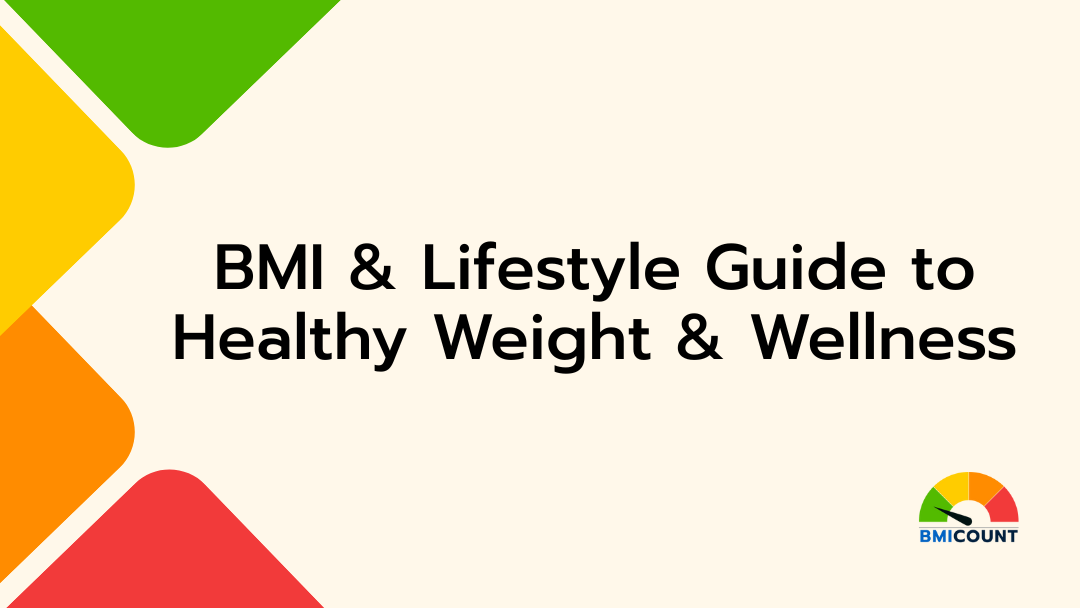As a parent, it’s natural to worry about your child’s weight and health especially when there’s so much talk around BMI numbers and “ideal ranges.” But here’s the truth: your child’s well-being can’t be measured by a single number. In fact, when it comes to long-term health, it’s the daily habits not the BMI that make the biggest difference.
Whether your child falls in a healthy percentile or not, obsessing over the chart won’t help them grow. What will help? Simple, realistic routines around healthy eating for kids, consistent movement, enough sleep, and emotional support all shaped by a positive family environment.
In this guide, we’ll move beyond the BMI and share actionable strategies to support your child’s growth through smart nutrition, joyful activity, and habit-based wellness. Because raising healthy kids isn’t about perfection it’s about progress.
We’ll also reference our BMI and Lifestyle Guide and Science and Data Behind BMI for parents who want to understand the science behind growth patterns and behavior change.
“Healthy eating for kids starts at home with consistency, encouragement, and a focus on long-term habits, not numbers.”
Why BMI Isn’t the Only Indicator for a Healthy Lifestyle for Kids
Body Mass Index (BMI) can be a useful screening tool but it doesn’t tell the whole story. When used alone, BMI doesn’t account for important factors like muscle mass, genetics, bone structure, or where your child is in their growth journey. That’s why experts agree: for children, lifestyle patterns matter far more than a single number.
In fact, two children with the same BMI may have very different health outlooks depending on how they eat, move, sleep, and feel. A child in the “normal” weight range might have poor nutrition and low energy, while another in a higher percentile might be thriving in terms of strength, sleep, and activity.
To get the full picture, you need to focus on creating a healthy lifestyle for kids, which includes daily habits around nutrition, exercise, screen time, and emotional well-being.
Key Limitations of BMI in Children:
- Doesn’t account for growth spurts or puberty
- Misses the quality of food, activity, or sleep
- Can trigger anxiety if taken out of context
- Doesn’t measure fitness or muscle development
A Better Approach: Focus on Holistic Health
Instead of tracking weight alone, look at:
- Energy levels and mood
- Consistency of meals and snacks
- Physical activity throughout the week
- Sleep quality and routine
- Your child’s self-esteem and confidence
For parents interested in the data behind BMI and its limitations, we recommend reviewing our Science and Data Behind BMI Calculations Guide.
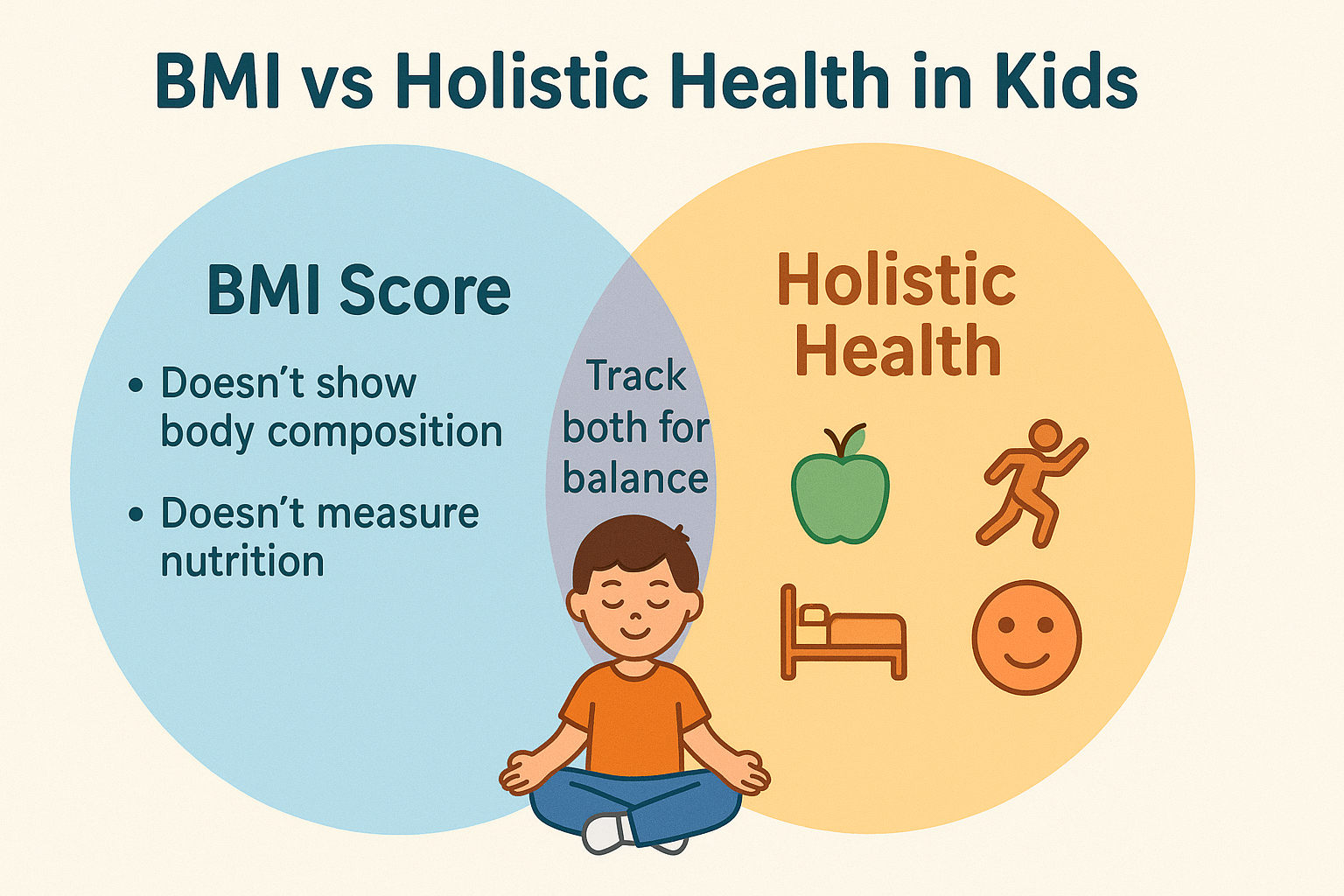
“A healthy lifestyle for kids means more than just falling into a BMI range — it’s about building patterns that support energy, confidence, and long-term wellness.”
Healthy Eating For Kids: Child Nutrition Tips That Actually Work
Healthy eating for kids doesn’t mean cutting out all snacks or forcing vegetables at every meal. It’s about creating routines around food that feel positive, flexible, and consistent — not restrictive. When children have regular, balanced meals and learn to listen to their hunger cues, they naturally move toward a healthier weight and stronger energy.
In fact, if you’ve used our Kids BMI Calculator, you may have noticed it includes habit-focused suggestions like “Focus on Balanced Meals” or “Hydrate More Often”. These are more than generic tips they’re targeted, age-appropriate guidance based on your child’s BMI percentile and activity level.
10 Realistic Child Nutrition Tips for Everyday Life
These child nutrition tips work not just because they’re healthy, but because they’re actually doable for busy families:
🍎 Serve fruits and vegetables at every meal aim for color
🧃 Swap sugary drinks for water or milk
🥪 Use whole grains for bread, rice, and pasta
🍳 Never skip breakfast protein helps start the day right
🧺 Involve your child in grocery shopping or lunch prep
🍫 Don’t label foods as “bad” instead, talk about “everyday” vs. “sometimes” foods
🥤 Offer snacks that include a protein + fiber (e.g., apple + nut butter)
📏 Use smaller plates to help with natural portion control
⏳ Keep consistent meal times to avoid grazing all day
❤️ Model your own healthy eating they notice everything
How to Make Healthy Eating for Kids Fun (and Non-Stressful)
- Let them “vote” on meals from a list of healthy options
- Create a snack station with fruits, veggies, or yogurt
- Use themed dinner nights (Taco Tuesday, Build-Your-Bowl Fridays)
- Give them age-appropriate cooking jobs
- Celebrate small wins (e.g., “You tried something new today!”)
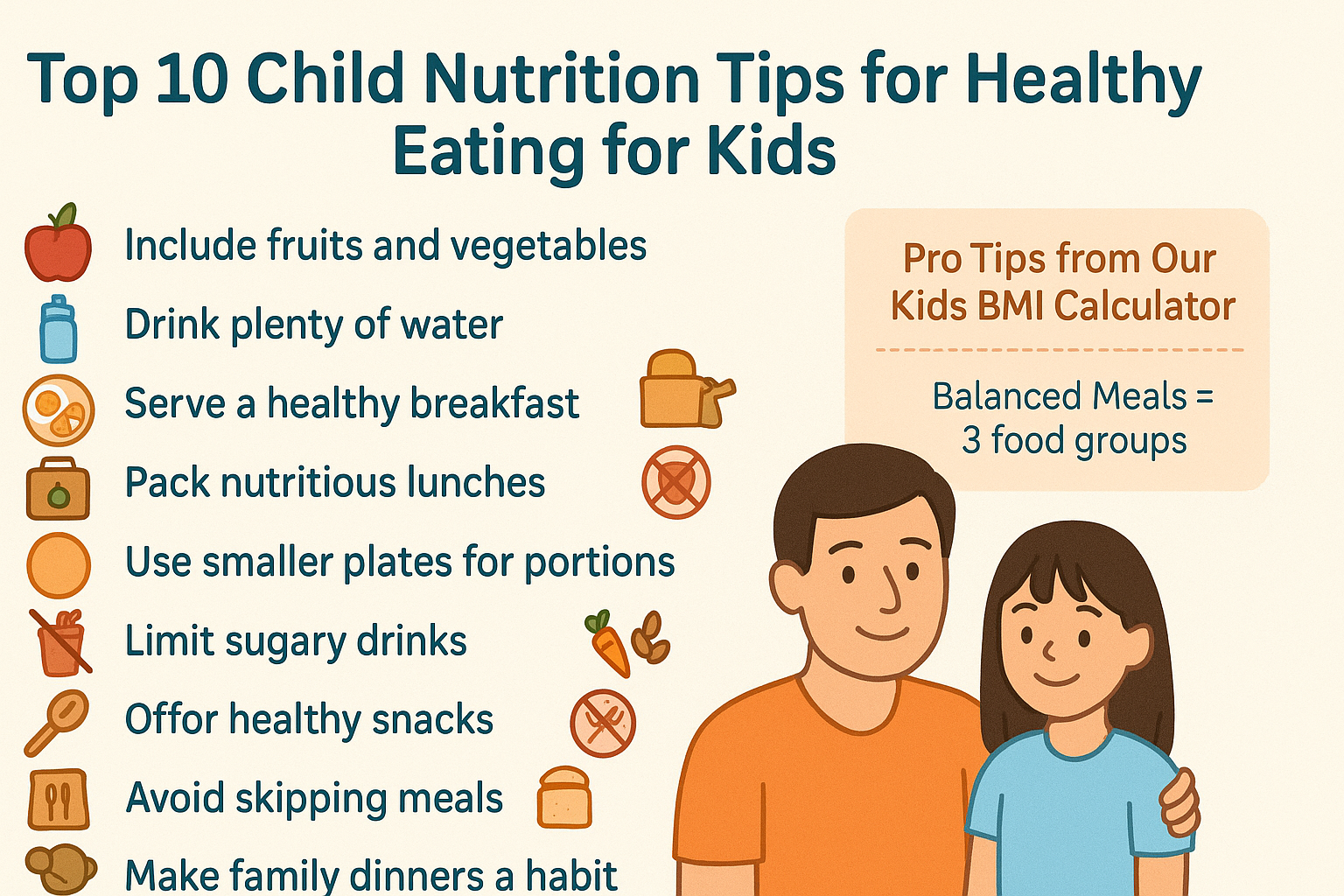
“Child nutrition tips don’t need to be complicated they need to be consistent. Healthy eating for kids starts with small changes repeated often.”
Physical Activity Guidelines for Children & How to Make Movement Fun
Movement plays a major role in helping kids maintain a healthy weight — but it does far more than just burn calories. Regular physical activity improves sleep, boosts mood, sharpens focus, and supports emotional resilience. In other words, it’s one of the most powerful tools for building a truly healthy lifestyle for kids.
According to the CDC’s physical activity guidelines for children, most kids need at least 60 minutes of moderate to vigorous activity daily — and that includes play! It doesn’t need to be organized sports or structured workouts to count.
If you’ve used our Kids BMI Calculator, you may have seen activity-related outputs like “Sedentary” or “Low Energy.” These are gentle prompts to help parents support more daily movement, not to create guilt or pressure.
Physical Activity Guidelines for Children by Age
| Age Group | Daily Movement Goal | Example Activities |
|---|---|---|
| 3–5 years | Active play throughout the day | Tag, hopscotch, climbing, trikes |
| 6–12 years | 60+ minutes of physical activity | Sports, biking, dancing, jump rope |
| 13–17 years | 60+ minutes, including strength | Gym, hiking, resistance, team sports |
Tip: The key is variety mixing aerobic (heart-pumping), muscle-building (climbing, bodyweight), and bone-strengthening (jumping, running) movements.
Make Movement Fun (So They’ll Actually Want to Do It)
🎯 Turn activity into a game: scavenger hunts, obstacle courses
🏞 Walk or bike instead of drive for short distances
📺 Use commercial breaks or screen timers for quick dance breaks
💃 Do “movement challenges” as a family (e.g., plank holds, jumping jacks)
🧘 Try kids’ yoga apps or mindful movement for screen-friendly exercise
🏕 Plan active outings: hikes, trampoline parks, community rec centers
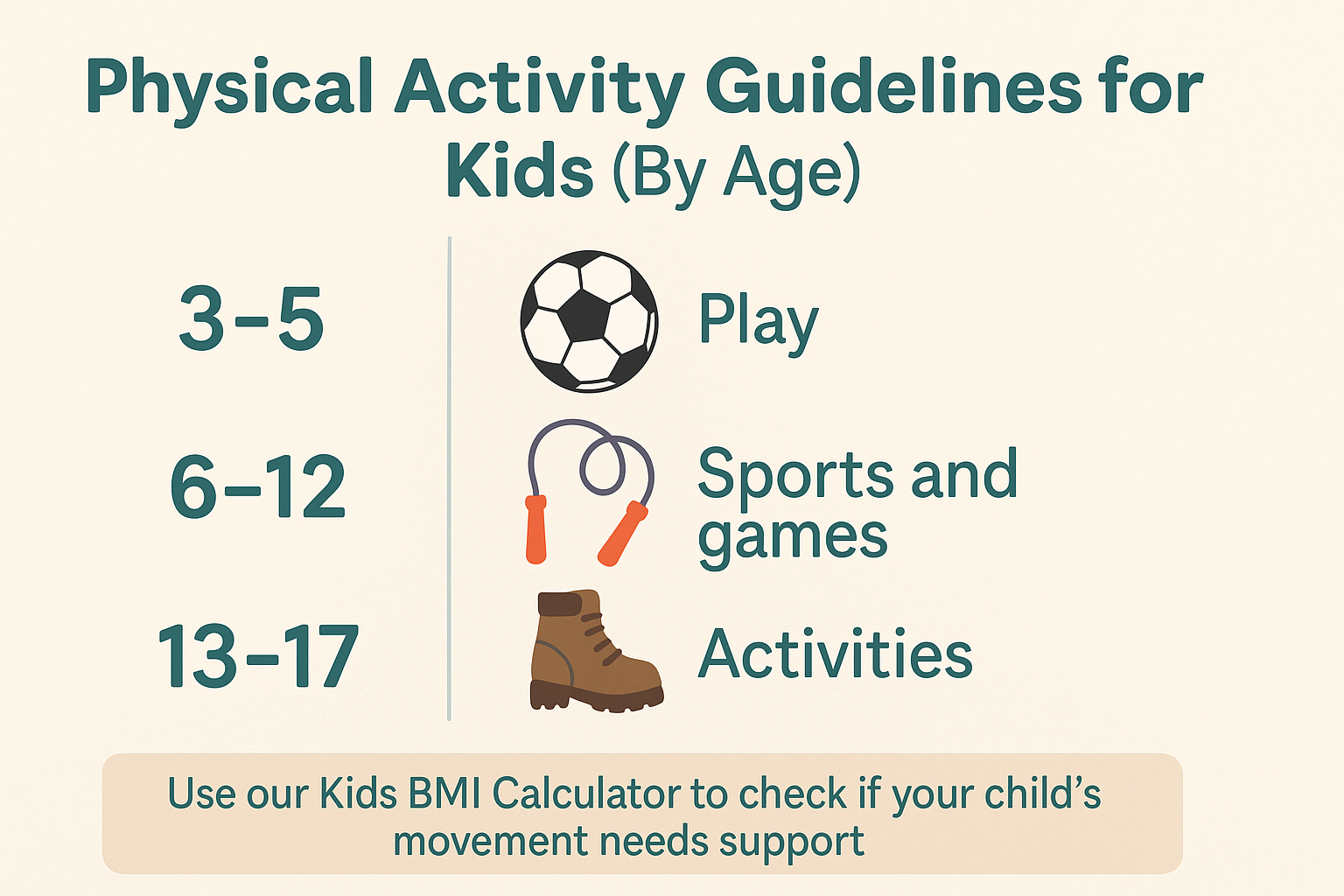
“Following physical activity guidelines for children becomes easier when movement is woven into everyday fun not treated like a chore.”
Building a Healthy Lifestyle for Kids With Sleep, Screens, and Support
Food and movement are critical but a truly healthy lifestyle for kids includes more than just meals and play. Sleep quality, screen time limits, and emotional support all play a powerful role in your child’s overall wellness, growth, and ability to maintain a healthy weight.
If your child isn’t sleeping enough or is glued to a screen for hours, even the best nutrition won’t have its full effect. That’s why building a balanced lifestyle means looking at the full 24 hours not just what’s on the plate.
How Sleep Affects Weight, Growth & Health
Sleep isn’t just rest — it’s when the body resets hormones, heals tissues, and balances appetite. Inconsistent or short sleep can lead to:
- Increased cravings for sugar and processed foods
- Lower energy and more sedentary behavior
- Emotional outbursts or difficulty focusing
- Weakened immune function
Sleep Targets by Age:
| Age Range | Ideal Sleep Time |
|---|---|
| 3–5 years | 10–13 hours/night |
| 6–12 years | 9–12 hours/night |
| 13–17 years | 8–10 hours/night |
Screen Time Limits That Work
Excessive screen use is linked to higher risks of sedentary behavior, poor sleep, and unhealthy snacking.
Healthy Limits:
💻 Max 1–2 hours/day for entertainment
🛏 No screens 1 hour before bedtime
🧩 Replace downtime with hands-on activities (puzzles, crafts, music)
🍽 Keep mealtimes screen-free to improve eating habits
Support Their Mental & Emotional Well-being
Children who feel safe, heard, and supported are more likely to engage in healthy behaviors. Emotional stress can lead to overeating, sleep disruption, or anxiety about body image.
Supportive Routines:
- Family check-ins (“What was the best part of your day?”)
- Normalize feelings without judgment
- Focus on what the body can do, not what it looks like
- Celebrate effort, not just results (e.g., “You made a great choice today!”)
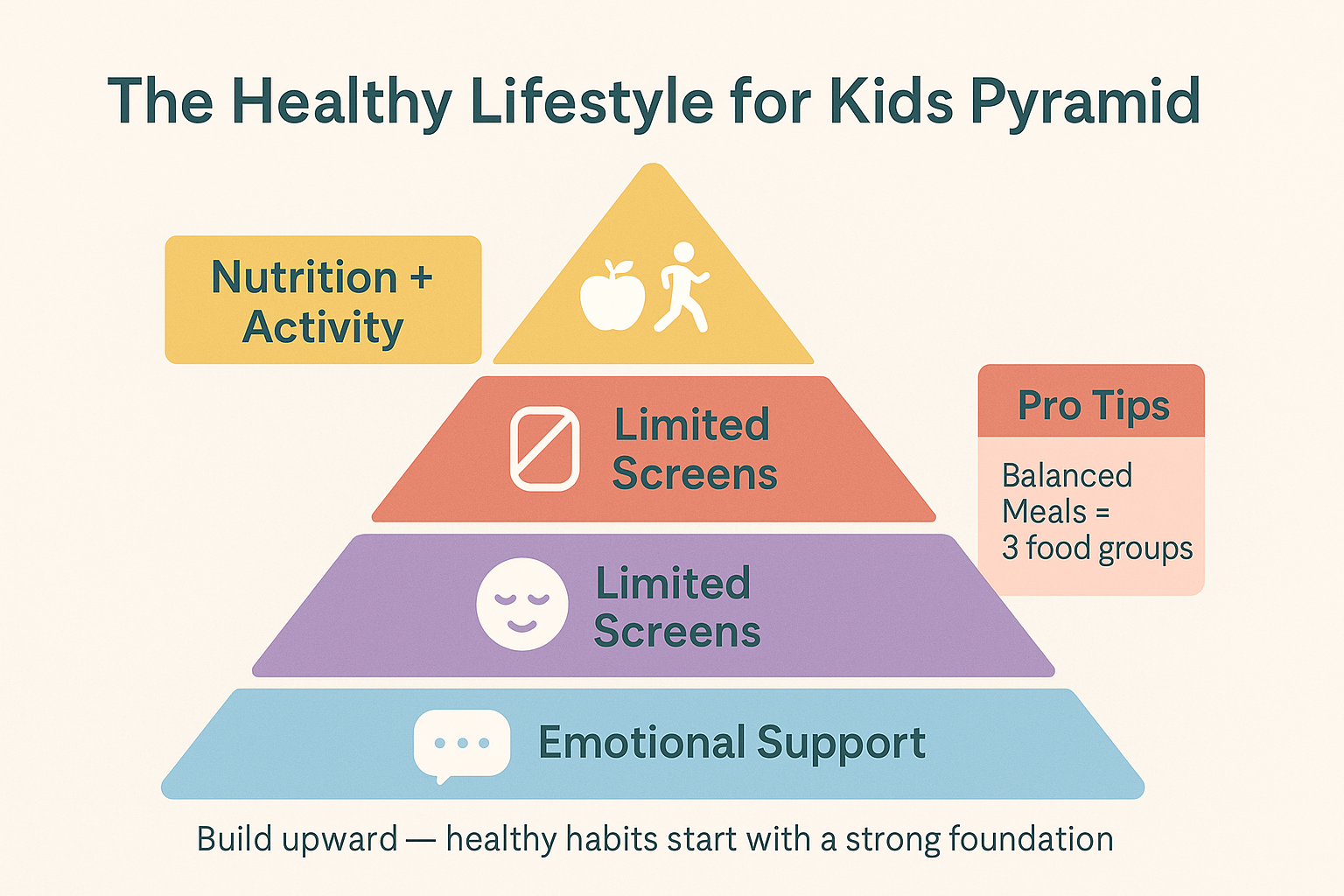
“A healthy lifestyle for kids is more than food and movement it’s sleep, screen balance, and emotional safety that create real, lasting well-being.”
Preventing Childhood Obesity Without Fear or Shame
When parents think about preventing childhood obesity, it’s easy to fall into panic mode cutting sugar, banning snacks, or watching every calorie. But real prevention doesn’t come from restriction or shame. It comes from building positive, sustainable habits that support your child’s energy, confidence, and well-being.
Kids don’t need to hear they’re “too big” or “eating too much.” They need support, structure, and role models who show them what health looks like not just talk about it.
Do This to Support Healthy Growth:
- Focus on adding healthy foods (more veggies, more water, more protein)
- Encourage daily movement — not just “exercise”
- Let BMI and weight be private discussions with doctors, not dinner table topics
- Create routines that make healthy choices the default:
- Snacks ready after school
- Set dinner times
- Family walks
Avoid These Common Pitfalls:
🚫 Labeling food as “bad” or making treats a reward
🚫 Publicly comparing children’s sizes or habits
🚫 Over-focusing on numbers instead of behavior
🚫 Using fear or guilt to change eating patterns
Long-Term Focus > Short-Term Fixes
True prevention is about building a lifestyle that supports healthy weight as a natural outcome not forcing kids to “lose weight.” Let your home environment, schedule, and mindset work together to shape healthy decisions without pressure.
You can also use our BMI and Lifestyle Guide to support long-term change with food, sleep, and movement strategies that work in real life.
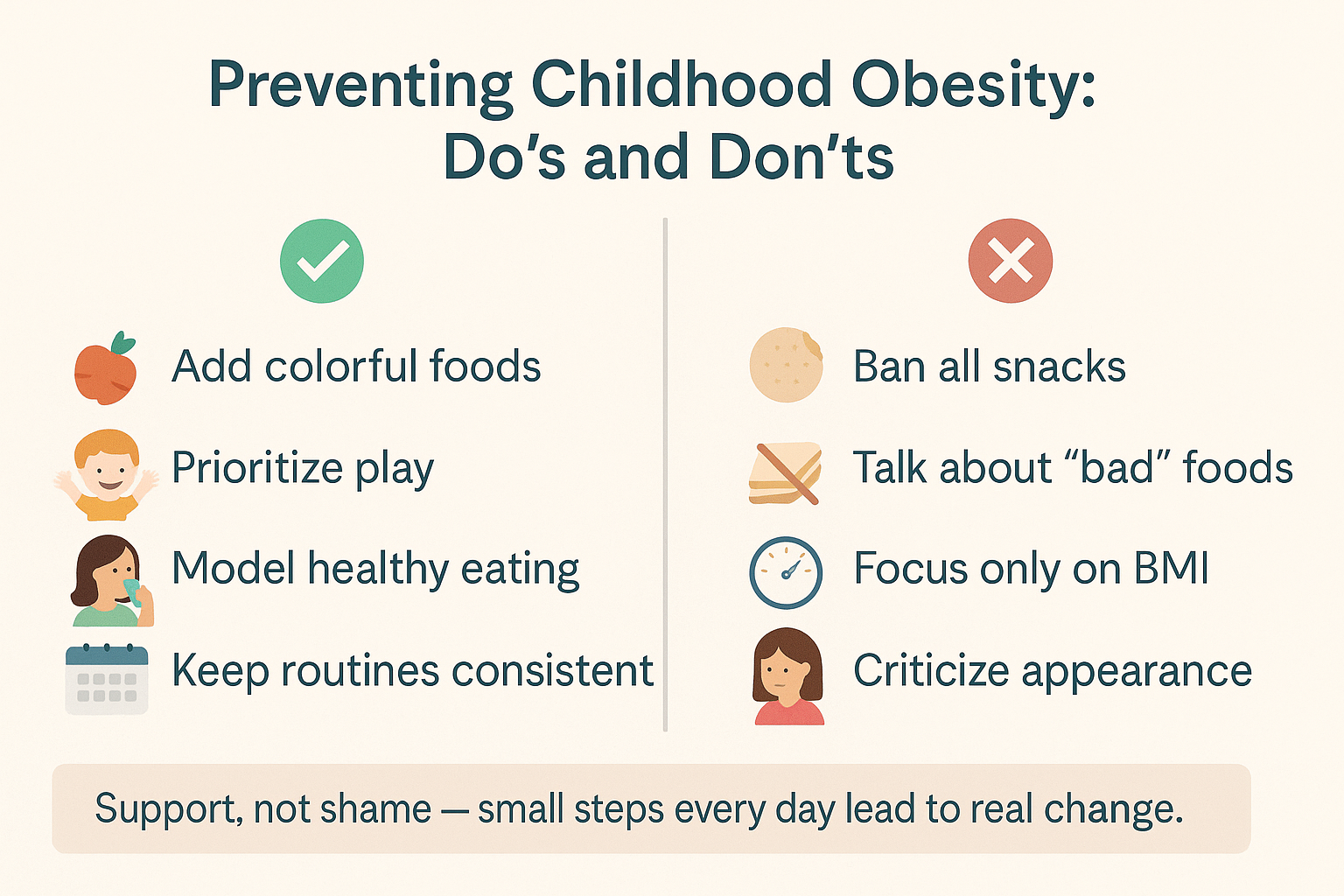
“Preventing childhood obesity isn’t about cutting everything out it’s about creating a life where the healthy choice is the easiest one.”
When to Consult a Pediatrician About Your Child’s Weight or Habits
While building routines around healthy eating for kids and physical activity is the best long-term strategy, sometimes you need expert support. If your child’s BMI percentile is consistently high or low, or if you notice unusual eating, sleeping, or emotional patterns it’s time to loop in your pediatrician.
Remember, your child’s doctor is your partner, not just someone to see when things go wrong. They can help you evaluate what’s normal growth versus something that needs attention.
Signs It’s Time to Call the Pediatrician
- Sudden weight gain or loss not tied to growth spurts
- Your child is in the underweight or obese percentile on BMI charts
- Low energy, frequent fatigue, or changes in appetite
- Food avoidance, emotional eating, or body dissatisfaction
- You feel unsure about how to support healthy habits at home
What to Bring to Your Appointment
| Item | Why It Helps |
|---|---|
| BMI percentile result (from our calculator) | Tracks growth trends over time |
| Notes on eating habits & daily routine | Gives doctors insight into lifestyle patterns |
| Any concerns or observations | Helps guide conversation and screening |
| Questions about physical, emotional, or social behaviors | Pediatricians check the whole child — not just weight |
Our Kids BMI Calculator can help you track BMI over time and download a result summary which is great to bring to your child’s checkup.
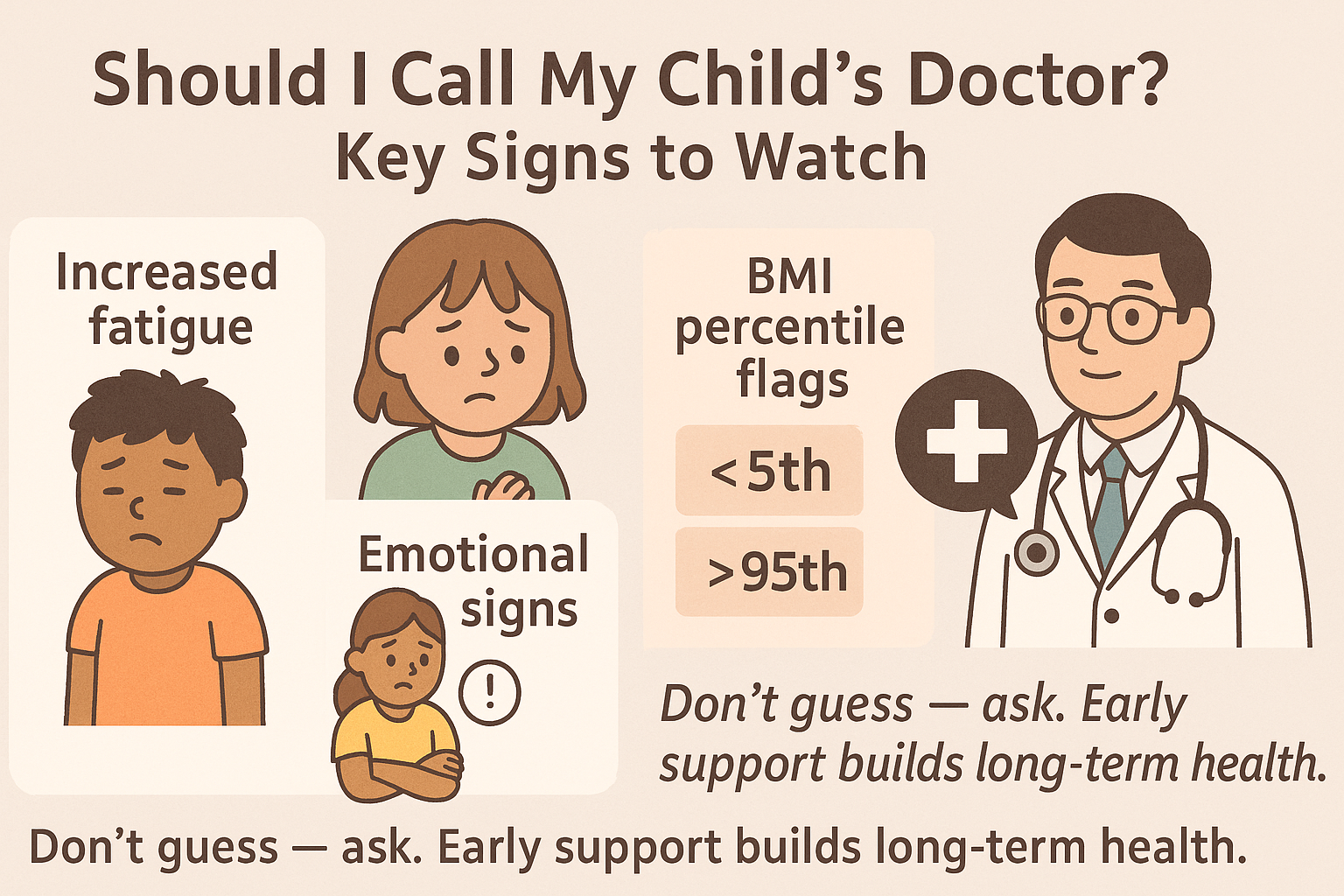
“Your pediatrician sees the full picture from labs to emotions. When you’re not sure what’s normal, they can help you take the next right step.”
Final Takeaway: Let’s Build a Healthier Future – One Habit at a Time
Helping your child stay healthy isn’t about obsessing over BMI charts or counting every bite. It’s about small, consistent habits eating colorful foods, staying active, getting enough sleep, and building emotional resilience.
The real goal isn’t a “perfect” number it’s confidence, energy, and joy in their everyday life.
Whether you’re just starting out or already making healthy changes, remember: you’re not alone. Our tools are here to support your journey with clarity and confidence.
Explore Our Family-Focused BMI Tools
Want to check BMI for your whole family? Use our free calculators designed for every age group:
- Kids BMI Calculator
- Teen BMI Calculator
- BMI Calculator for Men
- BMI Calculator for Women
- BMI Calculator for Seniors
- General BMI Calculator
These tools give you more than a number they offer insight, habit-focused suggestions, and downloadable results to share with your doctor or family.
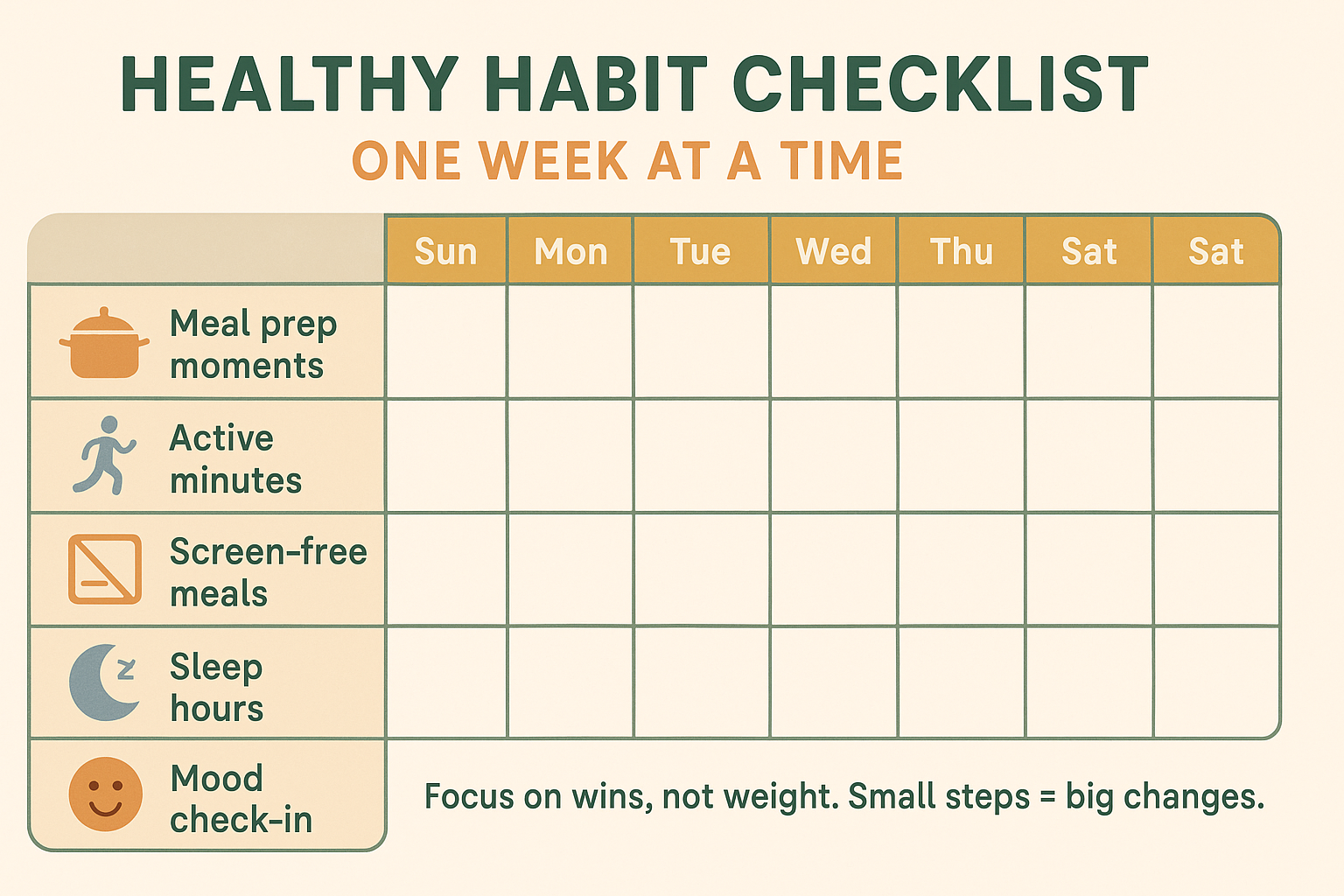
“You don’t need perfection just progress. One healthy habit at a time builds strength, confidence, and a future your child will thrive in.”
Frequently Asked Questions
What is considered healthy eating for kids?
Healthy eating for kids includes a variety of fruits, vegetables, whole grains, protein-rich foods, and healthy fats. It’s also about consistent meal times, hydration, and limiting sugary snacks or drinks.
How much physical activity do children need daily?
According to physical activity guidelines for children, kids aged 6–17 need at least 60 minutes of moderate to vigorous physical activity daily, including aerobic, muscle-strengthening, and bone-strengthening activities.
How can I help my child maintain a healthy weight?
Focus on building a healthy routine: nutritious meals, daily physical activity, good sleep habits, and screen time limits. Encourage confidence and talk positively about food and body image.
What are some simple child nutrition tips?
Try small swaps like water instead of juice, whole grain bread, fruit as a snack, and adding veggies to every meal. Involve your child in grocery shopping and cooking to build interest in healthy eating.
How does sleep affect my child’s weight?
Poor sleep disrupts hunger hormones and increases cravings for unhealthy foods. Children who sleep well are more likely to eat better, move more, and maintain a healthy weight.
What is the role of screen time in preventing childhood obesity?
Excessive screen time is linked to less physical activity, more snacking, and sleep problems. Reducing screen time supports better lifestyle balance and helps in preventing childhood obesity.
When should I talk to my child’s doctor about weight concerns?
If your child’s BMI is below the 5th or above the 95th percentile, or if you notice rapid changes in weight, appetite, or mood, consult your pediatrician. They can provide personalized guidance.
Do you have BMI calculators for different age groups?
Yes! You can explore:
– Kids BMI Calculator
– Teen BMI Calculator
– BMI Calculator for Men
– BMI Calculator for Women
– Senior BMI Calculator



